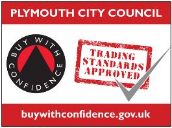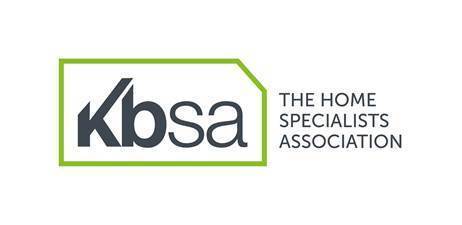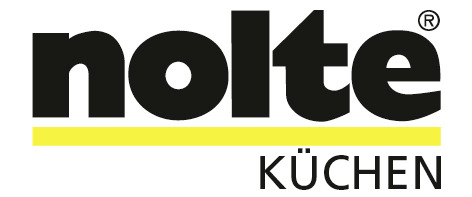Essential Pieces Of Cookware And Utensils To Have In Your New Kitchen
Whether you need a freshen up of your tools due to a kitchen revamp or its a new home the essential tools are always needed to ensure you cook great food every time. Having these staples in your kitchen will make life much easier. Plus, having the most necessary cookware will put you one step closer to making delicious meals and hosting the ‘talk of the town’ dinner parties. KF Kitchens has put together a list of the most vital pieces you need - whether you're a chef or novice cook, we’ve got you covered!
-
Cutting boards
It might sound obvious to have one of these, but a good cutting board has vital jobs including a clean work service and helps with knife maintenance. Having a decent cutting board is important because it keeps a knife from going dull too soon, so why would you have an expensive knife set but not take care of them when you use it. We recommend having separate cutting boards for meat, fish and vegetables, so there isn’t any crosstamination. Also, the best kind of cutting board is wooden, purely because wood absorbs residue and bacteria after manual cleaning with soapy hot water, but it holds the bacteria inside, where it cannot multiply and eventually dies. And, plastic, by contrast, can only be truly disinfected when they’re brand new. As soon as they have cut marks on the board, they are difficult to clean because they trap the bacteria in hard-to-reach crevices and unlike wood do not possess any natural antimicrobial qualities that can kill leftover bateria.
-
Knives
Knives. Every kitchen needs knives. There are three knives that are by far the most essential for any kitchen. Firstly, every kitchen needs a chef's knife. You will need this knife in order to do the bulk of your cutting, the broadness of a chef's knife blade makes it unmanageable for tasks better suited to a smaller knife. It will be best to find a knife that has a nice weight and is comfortable to hold as you will be possibly chopping through firmer vegetables like carrots and butternut squash. It needs to have a little heft to it. You will also need a serrated knife for cutting bread, unless you want your bread not neatly sliced. Finally, a paring knife is for slicing and mincing smaller items like garlic and herbs.
-
Measuring Cups, Spoons & Jugs
Buying measuring cups seems like an easy task but when buying measuring cups there are a few important things to know and features to look for. The most important feature to look out for is the material as both dry and liquid measuring cups have different advantages. Glass (e.g. jugs) is best for liquid measurements. Plastic or Metal (e.g. spoons or cups)work best for dry measurements. The next things to take into consideration is the sizing that the measurement utensils come in. Dry measuring cups usually come in sets of 4-6 cups. One of the reasons I really like my Tupperware measuring cups usually appear in a set that includes ¼, ⅓, ½, ⅔, ¾, and 1 cup/spoons. Whereas, liquid measuring cups are sold in different size capacities like litres and pints.
-
Can Opener
A can opener is a staple for every kitchen since tinned food has a long shelf life and can be brought in bulk. But the big decision is which one should you buy, electric or manual? The biggest consideration here comes down to the type of cans you plan on using in the kitchen. This is because most electric can openers cannot handle the heavier cans made out of more thicker metal, so this is where you would use a manual as it only requires you to hold the cans in place.
-
Colander
Colanders drain and can help us properly rinse the dirt and bacterial grime off fresh vegetables and fruits. They are great for rinsing the starchy water from your potatoes and are great for steaming ingredients when you don't have a steamer basket. A colander can also act as a place to store fresh ingredients when meal prepping so your work space stays clear.
-
Vegetable Peeler/Grater
To peel or grate veg or cheese you may use a knife but for a more sharp, precise cut and comfortable grip you may want to use a peeler or grater. Using this allows for more smooth movements which can make the difference between hacking away at your vegetables and having an effortless peeling experience. And no matter what level you are within the kitchen novice or a pro chef every home needs a peeler and grater in order to peel vegetables and grate cheese with ease rather than having rough and textured food.
-
Baking Tray
Having a baking tray is essential but when buying the right tray you must remember that you are most likely looking for a home kitchen baking tray rather than a professional one. Even one baking tray can take you quite far — you might not have the storage space in your kitchen for all kinds of specialty baking pans. Whether you’re roasting vegetables, cooking chips or baking cookies a flat surface tray is a staple that is a worthwhile piece of kit for your home. It is ideal for spreading out food and because it is flat, it doesn’t take up much storage space. But the main thing is that when buying a tray have in mind that it will last for years, this will save you money and hassle in the long run. Your oven trays can take a bashing. Things like oil residue and charred remains can build up over time, so we recommend using a baking sheet when you do use your baking trays.
-
A Casserole Dish A Non Stick Frying Pan
No kitchen is fully complete without a proper casserole dish. Not only are they the perfect way to make the best lasagna or shepherd's pie but they can also seamlessly transition from the oven to the table for an attractive display, when hosting dinner parties. When it comes to picking a casserole dish, it often depends on what you’re looking for and what your budget is like. For instance, you can buy long lasting ceramic dishes, a cast iron dish for a hefty piece of kitchenware, we recommend le creuset casserole dishes, you can find them here.
-
A Non Stick Frying Pan
A non-stick saucepan as the name suggests, has a non-stick surface which is designed to reduce the ability of food or oil to stick to it. The coating allows for food to cook without burning and sticking to the pan. Non-stick is often coated with polytetrafluoroethylene (PTFE). The benefits of a non-stick frying pan is that they’re easier to clean, you are able to cook or fry with less oil and also, there is better food release from the pan as the non-stick coating prevents the food from sticking. It is recommended that you must replace your non stick cookware every three to four years as the coating will wear down.
-
A Wok
Although some would say a Wok is not a ‘necessity’ it is hard to find a satisfactory substitute for a wok. A wok has numerous advantages over a saucepan or frying pan. It is able to distribute heat more evenly, it requires less oil, and because of its rounded shape it ensures that food (when tossed) during — for example, a stir-fry — lands back in the wok and not on the oven top or stove.
Final Thoughts
If you are moving home or planning to do a kitchen refurb, KF Kitchens can help you find the cookware and kitchen equipment for your home. Take a look at our website to see examples of our work and what appliances we can offer.











